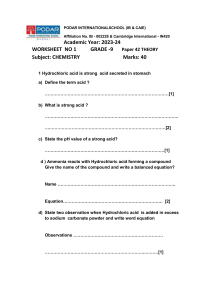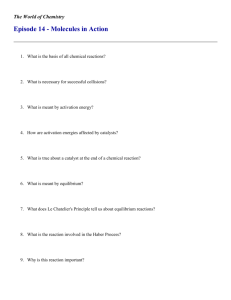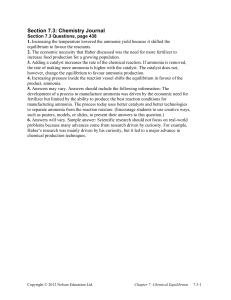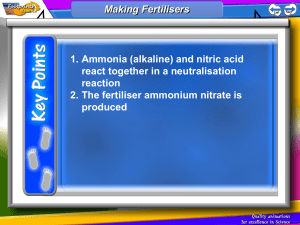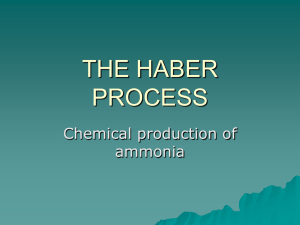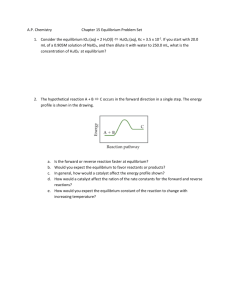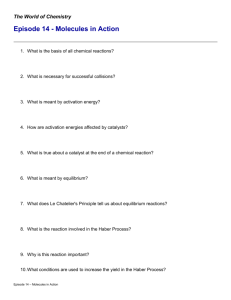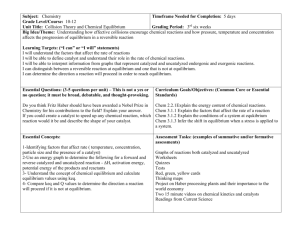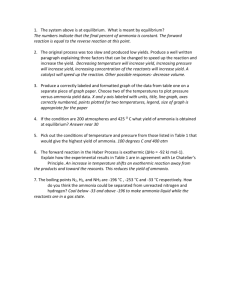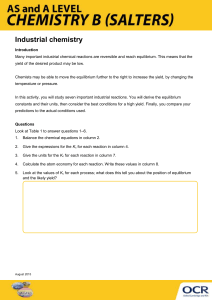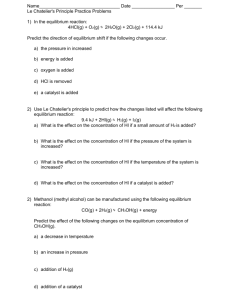MYP 10 EquilibriumWS2
advertisement
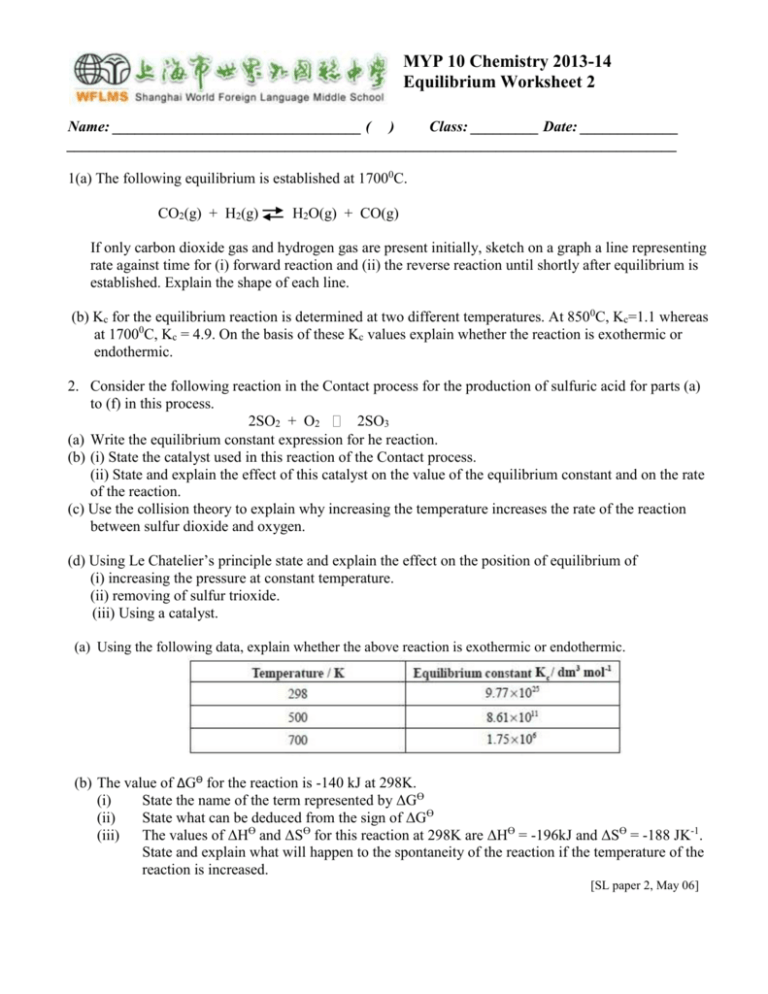
MYP 10 Chemistry 2013-14 Equilibrium Worksheet 2 Name: _________________________________ ( ) Class: _________ Date: _____________ _________________________________________________________________________________ 1(a) The following equilibrium is established at 17000C. CO2(g) + H2(g) H2O(g) + CO(g) If only carbon dioxide gas and hydrogen gas are present initially, sketch on a graph a line representing rate against time for (i) forward reaction and (ii) the reverse reaction until shortly after equilibrium is established. Explain the shape of each line. (b) Kc for the equilibrium reaction is determined at two different temperatures. At 8500C, Kc=1.1 whereas at 17000C, Kc = 4.9. On the basis of these Kc values explain whether the reaction is exothermic or endothermic. 2. Consider the following reaction in the Contact process for the production of sulfuric acid for parts (a) to (f) in this process. 2SO2 + O2 2SO3 (a) Write the equilibrium constant expression for he reaction. (b) (i) State the catalyst used in this reaction of the Contact process. (ii) State and explain the effect of this catalyst on the value of the equilibrium constant and on the rate of the reaction. (c) Use the collision theory to explain why increasing the temperature increases the rate of the reaction between sulfur dioxide and oxygen. (d) Using Le Chatelier’s principle state and explain the effect on the position of equilibrium of (i) increasing the pressure at constant temperature. (ii) removing of sulfur trioxide. (iii) Using a catalyst. (a) Using the following data, explain whether the above reaction is exothermic or endothermic. (b) The value of ΔGƟ for the reaction is -140 kJ at 298K. (i) State the name of the term represented by ΔGƟ (ii) State what can be deduced from the sign of ΔGƟ (iii) The values of ΔHƟ and ΔSƟ for this reaction at 298K are ΔHƟ = -196kJ and ΔSƟ = -188 JK-1. State and explain what will happen to the spontaneity of the reaction if the temperature of the reaction is increased. [SL paper 2, May 06] 3. The table below gives information about the percentages yield of ammonia obtained in the Haber process under different conditions. Pressure / atm 10 100 200 300 400 600 200 50.7 81.7 89.1 89.9 94.6 95.4 Temperature 300 400 14.7 3.9 52.5 25.2 66.7 38.8 71.1 47.1 79.7 55.4 84.2 65.2 500 1.2 10.6 18.3 24.4 31.9 42.3 (a) From the table, identify which combination of temperature and pressure gives the highest yield of ammonia. (b) The equation for the main reaction in the Haber process is : N2(g) + 3H2(g) 2NH3(g) ΔH is negative Use this information to state and explain the effect on the yield of ammonia of increasing (i) pressure (ii) temperature (c) In practice, typical conditions used in Haber process are temperature of 5000C and a pressure of 200 atmospheres. Explain why these conditions are used rather than those that give the highest yield. (d) Write the equilibrium constant expression, Kc, for the production of ammonia. (e) (i) Suggest why this reaction is important for humanity. (ii) A chemist claims to have developed a new catalyst for the Haber process, which increases the yield of ammonia. State the catalyst normally use for the Haber process, and comment on the claim made by this chemist.
